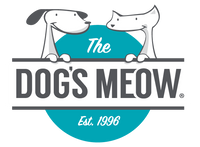Yeast Got You Scratching?
About Yeast Infections
Picture this, you’re sitting on your couch, and your dog is nonstop licking at their paw pads or scratching at their skin or ears. You get a little closer to your dog and realize their hair is very greasy, and there is an odd odor coming from their coat. You examine your dog even closer and realize that it has black speckles on its underbelly and has some hair loss. These are all signs that may be associated with dogs that are suffering from a yeast infection. No need to fret, yeast infections are not an uncommon skin issue for dogs. Although, for your dog's well being, it should be left untreated. Various infections, including this kind, can take a while to get under control, and the longer it goes untreated the harder it is to treat. Common issues or signs include:
- Hot Spots
- Itchy Skin
- Paws that smell like Yeast or Corn chips
- Ear infections, smelly ears
- Possible food sensitivities
So, what is yeast and how did it get into my dog?
Yeast or otherwise known as Candida is a fungus that presents itself in small amounts in the intestines. This fungus helps with digestion, but if it becomes overgrown it can become a fungal infection. Due to this imbalance of the natural microbial order in the digestive tract, the toxins from the yeast are released into the bloodstream causing it to be carried into other parts of the canine body like the skin, ears, and feet. From there it causes irritation and inflammation of the skin which is why yeast infections are often mistaken for allergies.
How do I get the yeast infection under control?
The first step you should try in eliminating the excess yeast overgrowth is to change your dog’s diet. Eliminate feeding your dog foods that are high in carbs and sugars. Yeast thrives off of carbohydrates and sugars and can make the overgrowth even worse. These carbohydrates include:
- Rice
- Millet
- Potatoes (including sweet potatoes)
- Wheat
- Corn
- Oats
- Peas
Another food you might consider avoiding is fish that may be high in mercury, yeast also loves mercury and other heavy metals that are present in fish. Data supports that the best route of action is feeding a raw or gently cooked diet until the yeast has been fully resolved. Feeding raw helps due to its very low carbohydrate content and no preservatives. If raw is not an option that you would like to pursue, there are other options. Try a canned diet with limited carbohydrates or try a low carbohydrate kibble such as Orijen (approximately 23%), and Essence (approximately 27%).
Next plan of attack is to get the gut healthy again. You can do this with supplements.
If you are interested in treats that also have beneficial ingredients; stick to feeding freeze-dried meat such as Sojo’s or Small Batch. These can be used to replace any biscuits or any treats with a high carbohydrate content.
What supplements should I give my pet?
There are a lot of great supplements that we carry to help with yeast infections. A great place to start is supplementing the diet with products that we carry in store such as:
Fidobiotics & Meowbiotics: Contains 6 billions Cpus of good live bacteria, probiotics, and enzymes and comes in a tasty flavor, coconut peanut butter. or tuna for cats
Optagest: Optagest is a complete prebiotic and plant-based enzyme blend. This will serve as a food source for your pets’ friendly bacteria. This will promote gastrointestinal health and improve your pet’s ability to absorb nutrients. Optagest is also free of grains, fillers, lactose, sugar, and preservatives so you can make sure your pet is getting the most out of their meals.
N’zymes: N’zymes are a super food that include antioxidants and enzyme-rich nutrients. They also contain “live food enzymes”, which tell your pets body how to utilize the nutrients obtained by N’zymes supplements. It is through these ingredients that your pet can replenish its vital nutrients and create fuel that will generate more of your pets own enzymes.
Jatoba Oil: Jatoba is an antimicrobial and antifungal oil that assists the body’s natural ability to remove unwanted yeast. The oil, which is extracted from the Jatoba tree, can improve oral health, skin, and digestion. Jatoba is also known to increase your pet’s energy levels as well as reduce stress.
N’zymes Ox-E Topical spray: This topical spray contains water molecules with an extra electron which creates it a negative charge. This water is then mixed with the N’zymes Ox-E-drops to create a spray that supports immune health and protect against harmful pathogens. N’zymes topical spray is applied by spraying it directly onto the areas affected by yeast to stop its growth.
As stated above, yeast infections are a common skin issue in dogs but should be treated as fast as possible. If you are unsure on where to start or would like some more suggestions, we would be more than happy to help you find what is best for your pet.
Sources
https://www.nzymes.com/dog-skin-problems-2/healthy-skin-program/
https://shop.animalbiome.com/blogs/pet-health/the-truth-about-dog-digestive-enzyme-supplements
https://www.thomaslabs.com/product/article-four-digestive-enzymes/articles-digestive
https://pettao.com/lipase-benefits-pet-digestion/
https://www.dogsnaturallymagazine.com/enzymes-and-your-dog/
https://mybrownnewfies.com/2016/07/15/healthy-from-the-inside-out/
https://www.nzymes.com/nzymes-nutritional-solutions-todays-health-challenges/
https://thenaturaldogstore.com/products/amber-technology-vibactra-plus
Put together by our staff . We are not veterinarians and put this together to support you to find solutions for your itchy dog or cat.






